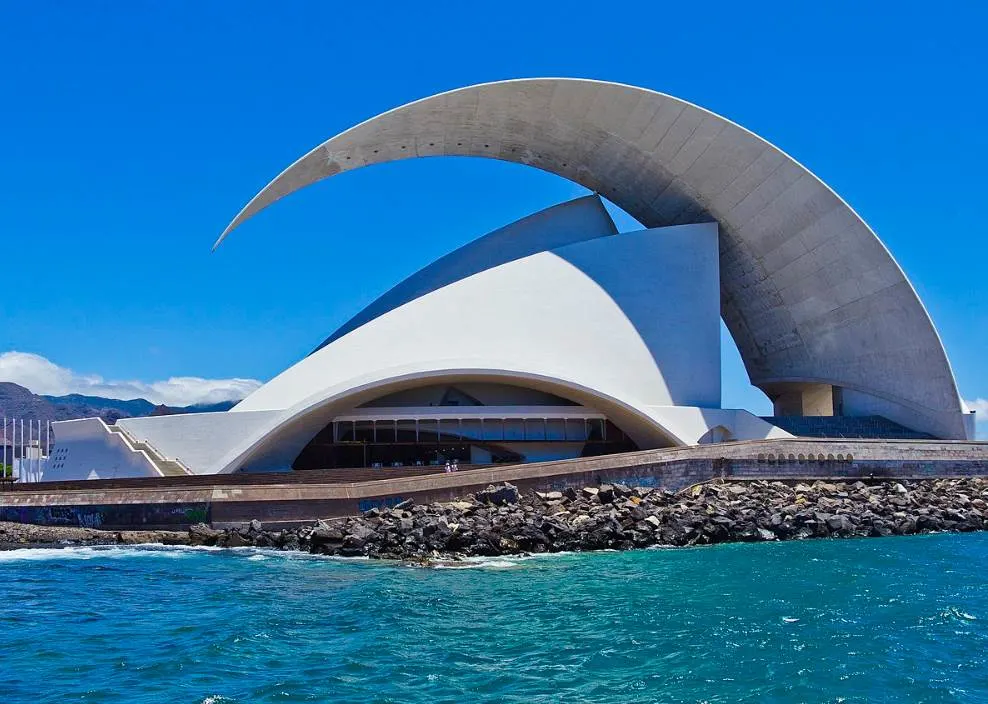Just like the name of the movement implies, Expressionist architecture refers to any type of building that aims to convey a particular emotion.
The initial definition labeled buildings that were constructed between 1910 and 1930 in particular countries in Europe, including Germany, the Netherlands, Austria, the Czech Republic, and Denmark.
Today, we define Expressionist buildings as any structure that displays the main qualities of this architectural movement, including fragmentation and distortion to achieve the core emotional element.
When it comes to visual arts, the term Expressionist instantly makes us think about a screaming man who appears to be frightened of the gloomy orange sky behind him.
While it’s much easier to depict extreme emotions in a painting, some architects managed to produce remarkable Expressionist structures that perfectly embody the ideals of the movement.
In this article, you’ll discover some of the most famous Expressionist buildings from all around the world.
1. Centennial Hall – Wroclaw, Poland
The Centennial Hall is the name of a building in Wroclaw, Poland, that was originally referred to as “Hala Ludowa” or “People’s Hall.” It was one of the first examples of Expressionist architecture in Europe as it was completed between 1911 and 1913.
The building was designed by German architect Max Berg (1870-1947) during a period in history when Wroclaw was still part of the German Empire. It was commissioned to commemorate the 100th anniversary of the 1813 War of Liberation against Napoleon. It’s an early example of a reinforced concrete building and was listed as a UNESCO site in 2006.

2. Sydney Opera House – Sydney, Australia
The Sydney Opera House isn’t just one of the most famous Expressionist buildings in the world, this building in Sydney is also one of the most iconic structures ever built. This multi-venue opera house was designed by Danish architect Jørn Utzon and occupies all of Bennelong Point on Syndey Harbour.

The building consists of multiple concrete shells that form the roof of the various venues of the performance arts center. With a maximum height of 65 meters (213 feet), it’s also one of the most distinctive landmarks in the city. The entire building covers an area of 1.8 hectares (4.4 acres) of land.
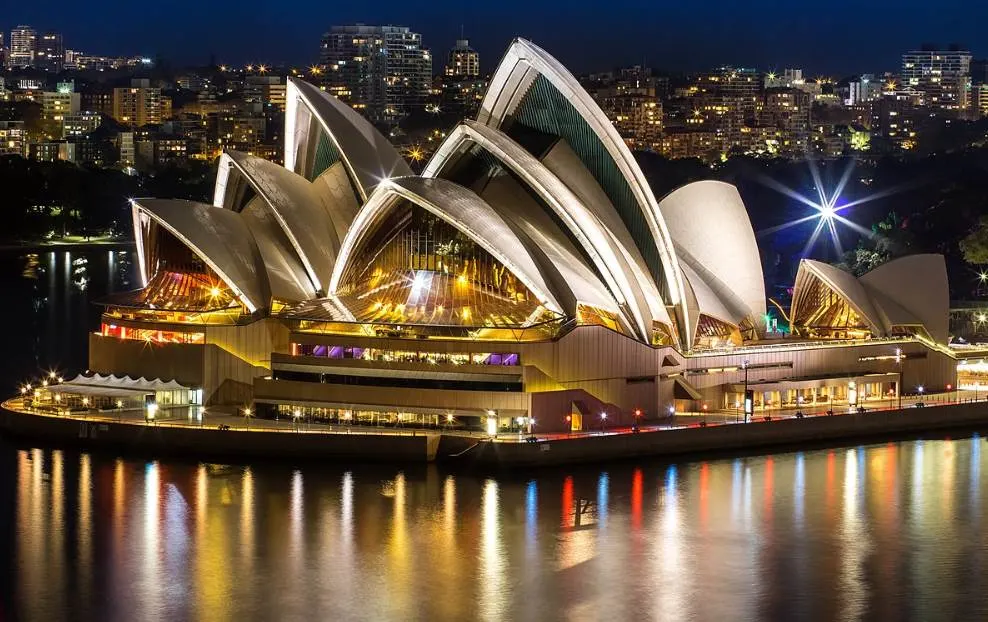
3. Het Schip – Amsterdam, Netherlands
Het Schip is the name of a remarkable building in Amsterdam. It’s the epitome of the Amsterdam School of architecture, a style that was popular between 1910 and 1930 and which was part of the international Expressionist movement.
The building was designed by a Dutch architect named Michel de Klerk (1884-1923) who was one of the founding members of the Amsterdam School. The building complex consists of various facilities for working-class families. The design was an incredible improvement for poor people who lived in Amsterdam during the early 20th century.
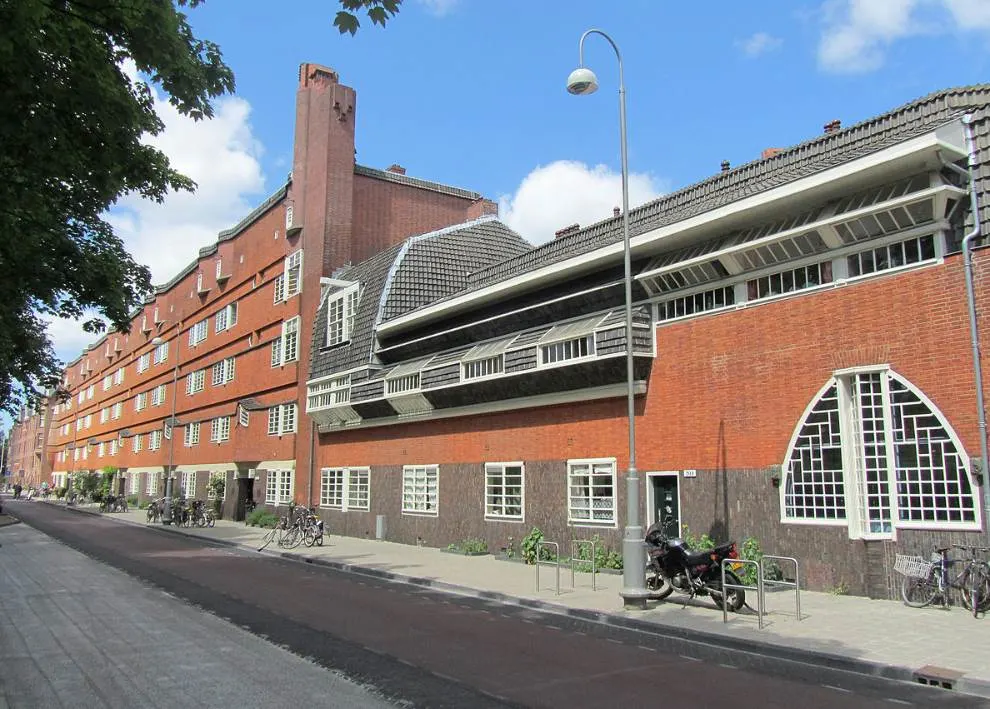
4. Borsigturm – Berlin, Germany
The Borsigturm or Borsig Tower is a building in Berlin and one of the first skyscrapers in the city. The building is far from being as high as the skyscrapers in New York City at the time as it only reaches a height of 65 meters (213 feet).
The lower sections of the tower are typical of the industrial architecture that was popular in the 1920s. The upper section features an Expressionist design, making it the first building that combines both architectural styles into one structure.

5. Paula Modersohn-Becker Museum – Bremen, Germany
The Paula Modersohn-Becker Museum is the first museum in the world that was dedicated to a female artist. Paula Modersohn-Becker (1876–1907) was one of the leading German Expressionist artists of the late 19th and early 20th centuries and the museum is dedicated to her paintings.
The building was commissioned by art patron Ludwig Roselius who was a fan of Modersohn-Becker’s works. The building was completed in 1927 and is the epitome of the Brick Expressionist movement. This was a variation of the general Expressionist style that was popular in the Netherlands and Germany.
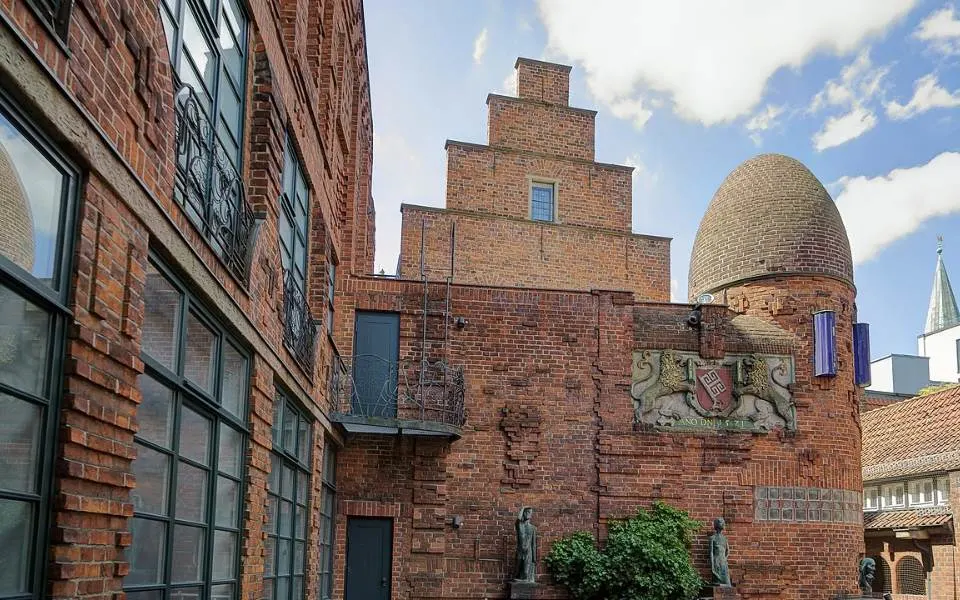
6. Hallgrímskirkja – Reykjavík, Iceland
Hallgrímskirkja is one of the most stunning churches in the world. This Lutheran church is located in Reykjavík, the capital city of Iceland. The building stands 74.5 meters (244 feet) tall and although this isn’t too high, it still dominates the city’s skyline.
The construction of this remarkable building in Reykjavik started in 1945 but it wasn’t fully completed until 1986. The Expressionist design of the building was inspired by a famous church in Copenhagen called Grundtvig’s Church, a building that was completed between 1927 and 1945.
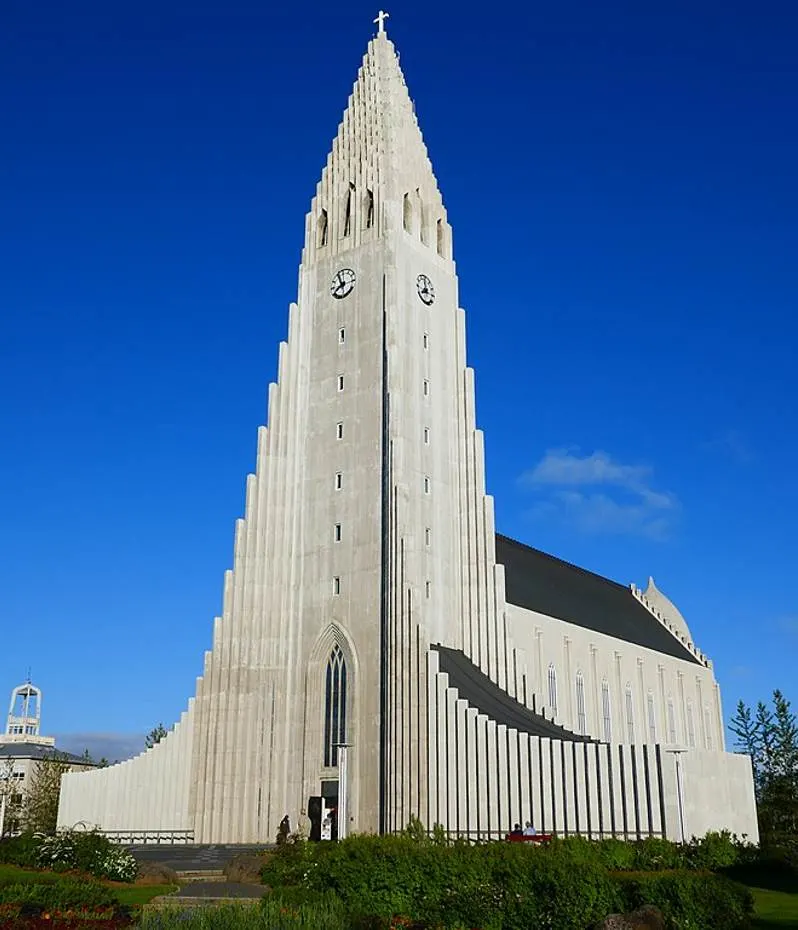
7. Yoyogi National Gymnasium – Tokyo, Japan
The Yoyogi National Gymnasium is a building in Tokyo that was completed between 1961 and 1964. It was constructed to serve as the main venue of the swimming and diving events of the 1964 Summer Olympics which were held in Japan’s capital city that year.
The building was designed by the Japanese architect Kenzo Tange (1913-2005), a man renowned for his ability to blend traditional Japanese with modern architecture. The building’s arena seats 13,291 people and is still frequently used for ice hockey, basketball, and futsal events.
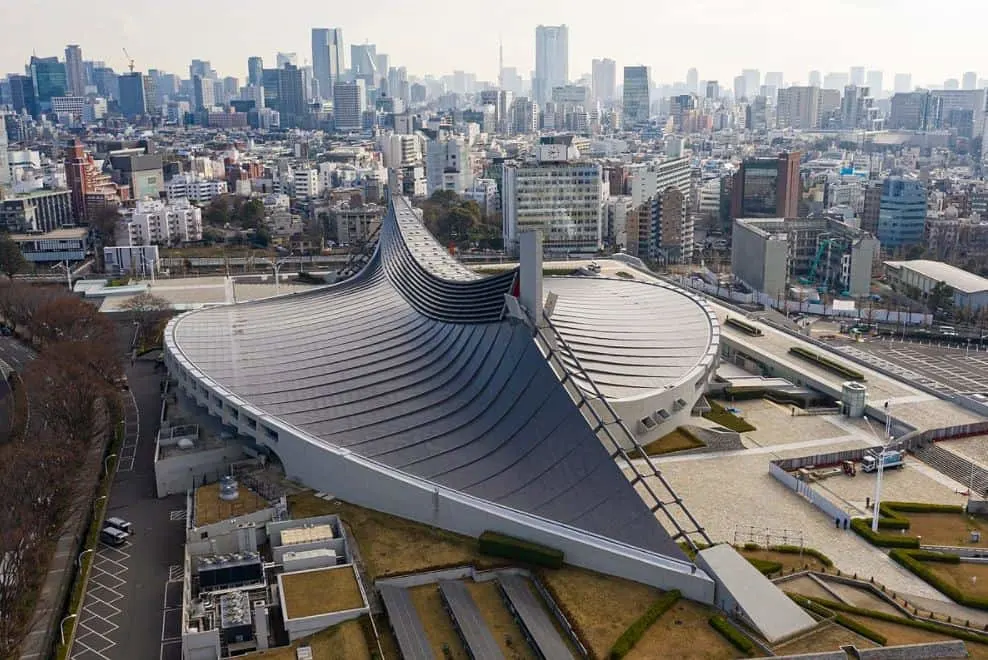
8. Lotus Temple – Dehli, India
The Lotus Temple is an immense Baháʼí House of Worship in Dekhi, just south of New Dehli, the capital city of India. The building was completed in 1986 and features a similar design as the Sydney Opera House. The design of the building in India aims to replicate a lotus flower.
The entire structure consists of 27 free-standing petals that are clad with marble. This arrangement incorporates 9 entrance doors that lead up to the central hall of the building. The building reaches a height of 34.27 meters (112.4 feet) and has a diameter of 70 meters (230 feet).
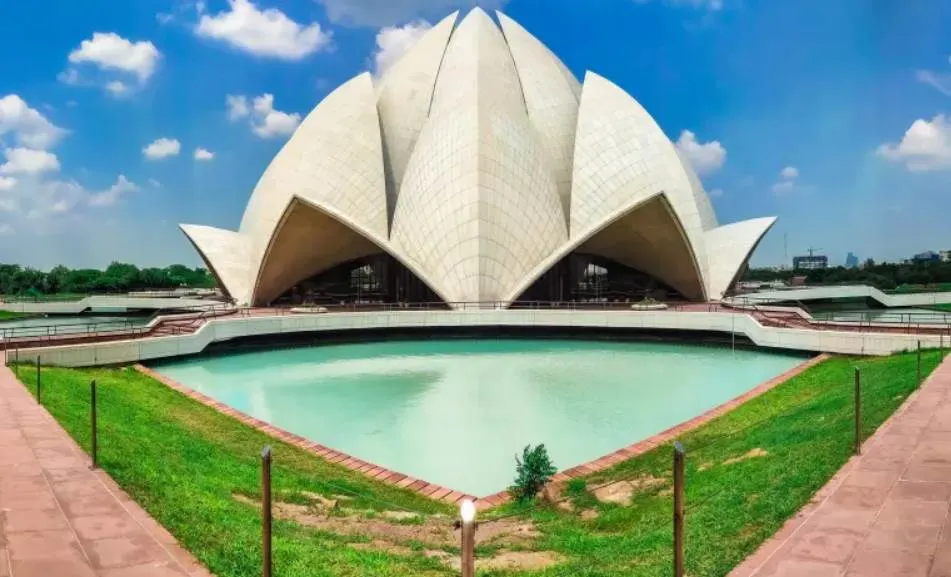
9. Anzeiger-Hochhaus – Hannover, Germany
The Anzeiger-Hochhaus is a building in the German city of Hannover. It stands 51 meters (167.32 feet) tall and was one of the first highrise buildings in the city upon completion in 1928. It’s another prominent example of the Brick Expressionist architectural style that was popular in the country during the 1920s.
The most stunning feature of the building is the green dome that tops it. This dome is 12 meters (39.37 feet) high and makes it a very distinctive landmark in Hannover. Whether or not it has something to do with it remains unknown, but it was one of the few buildings in central Hannover that survived the Allied bombings during World War II.
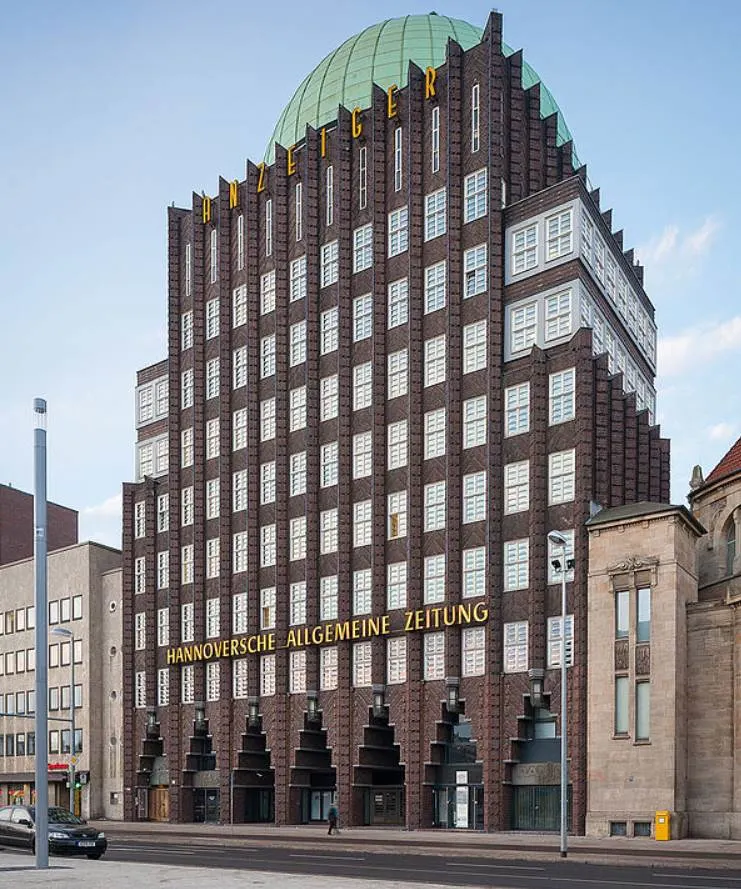
10. Auditorio de Tenerife – Santa Cruz de Tenerife, Canary Islands, Spain
The Auditorio de Tenerife is officially known as the “Auditorio de Tenerife Adán Martín” and is a stunning performance arts venue in Santa Cruz de Tenerife, the capital city of the Spanish island. It was designed by the Spanish architect Santiago Calatrava and completed in 2003.
The location near the Atlantic Ocean in a central area of Santa Cruz de Tenerife and the remarkable design have made it one of the city’s most stunning landmarks. The so-called “Great Arc” was a first in architectural history as it’s only supported in two areas. The resemblance to the Sydney Opera House has resulted in Santa Cruz being dubbed “The Sydney of the Atlantic.”
